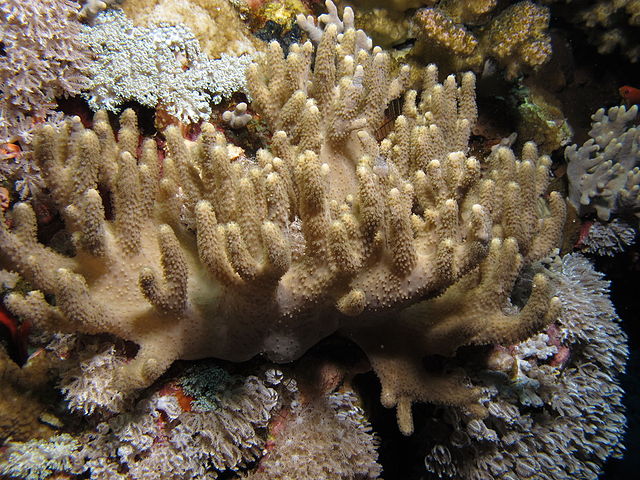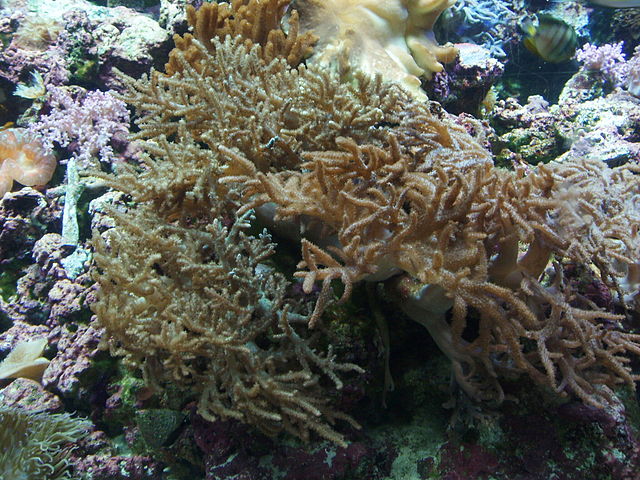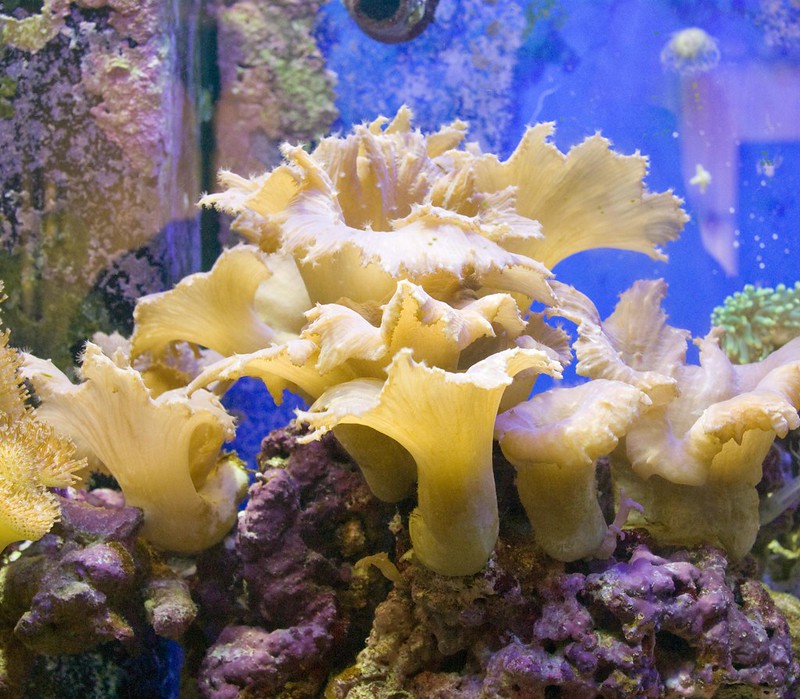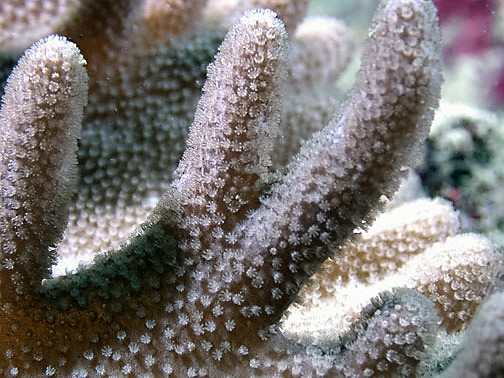
Sinularia or better known as Leather corals are a popular species of soft corals for home aquariums. There are several popular varieties including Finger Leather, Cabbage Leather, Spaghetti Finger Leather, and Blushing Finger Leather Corals.
They are soft corals with small polyps all over their skin, and they are popular with both beginners and experienced reef tank owners.
These soft corals are easy to care for, and they can tolerate a small range of water parameters, and they are excellent choices for new reef aquarists. Some corals need very stable water parameters, but Leathers can do well in a newer tank that is not stable yet.
Newer tanks tend to have fluctuating parameters which makes Leathers a good choice because they are hardy enough to survive the swings a little bit better than some others like SPS or LPS. While they do get labeled as corals for new reefers, that should not keep experienced reef tank owners from having them in their tanks. There are several beautiful varities that look great, and will make any experienced reefer’s tank look fantastic.
- Family: Alcyondiidae
- Species: Sinularia
Sinularia are a type of soft coral, and there are multiple varieties of finger corals even in the same species. Here are some of the most popular ones used in reef tanks:
Finger Leather Coral (Sinularia)
The standard Finger (Sinularia sp.) is what most people refer to when talking about Sinularia. These come in shades or green and brown, and they usually have different colored polyps. This coral looks like it has multiple finger-like appendages coming out of its base. When the coral grows, these fingers get longer.
They come in several different color variations including cream, brown, pink, and yellow. The Green finger leather coral is probably one of the most widely available color variations.
Spaghetti Finger Leather Coral

Spaghetti Finger Leather coral (Sinularia flexibilis) is another common variety. This coral has thin fingers that can sway with the flow in your aquarium. It is differentiated from other leathers by it thin fingers that can flex and move. It is also slimy feeling where others are more tough feeling.
Cabbage Leather Coral

The Cabbage leather (Sinularia brassica) gets its name due to its appearance which looks like a cabbage leaf. This is a great coral for beginners because it is hardy, and it grows rapidly. These are great for filling empty spaces in aquariums because they can quickly fill in an area. These come in several color variations like brown, pink, green, and cream.
Blushing Finger Leather
This is one of the more expensive varieties of leather corals. In addition to that, they are also a little harder to care for. They are not a difficult coral, but for this type of coral, they are a litter harder to manage. It has a bushy appearance when the polyps are fully extended.
Tank Parameters For Sinularia Leather Corals
Sinularia corals need fairly standard water parameters for a reef tank. Due to being soft corals, they are not as reliant on alkalinity and calcium levels as something like a SPS would. If you are able to keep standard reef measurements in your tank, then you should be able to successfully keep these in your tank.
- Temperature: 72-78
- sg: 1.023-1.025
- pH: 8.1-8.4
- dKH: 8-12
- Magnesium: 1200-1350
- Waterflow: Medium-Strong
- Lighting: Moderate-High
Tank Placement For Finger Leathers
The average recommendation for tank placement for Sinularia Leather corals is medium to high flow with moderate to high lighting. In our experience, they do better on the higher end of both flow and lighting. They can be placed anywhere in your tank that meets this criterian and allows room for growth.
As we mentioned before, these are hardy corals, and they can survive in a tank with swinging parameters. They can also do well in tanks that do not have enough powerhead flow and light intensity.
While the goal at first may be to keep corals alive, providing them with proper lighting and flow will make them healthier, and they will look better in your display tank. This is why it is important to provide them with high flow and lighting.
You will also need to place them where they can have some room to grow. These corals grow fast, and you will need to keep that in mind when choosing a spot for them. They are also semi-aggressive, so they also do not need to be near other corals. Leather corals can sting, and they can emit defensive chemicals.
Can Leather Corals Touch each other? Yes, leathers can touch each other most of the time. Each species of coral is different and may react negatively to another species getting close or touching it. They will let you know quickly if they dislike being close to a different species of Leather. They may fight chemically at first, but over a few days they may tolerate each other and grow happy together.
Coral Care
Leather corals are easy to keep and care for, and do not require any extra maintenance. The main requirements are stable water conditions that was discussed above, good flow, and good lighting.
Swings in pH and salinity will do the most harm to these corals, however, they are hardy and can tolerate some normal shifts.
Because of their aggressive nature and ability to release small amounts of toxins, it is a good idea to keep carbon running in your tank to help remove any chemicals that the Leathers excrete.
Leather corals will also shed from time to time. This means that they will slough off a thin layer of tissue. This is done to remove the outer layer of tissue that may have accumulated waste, detritus, algae, etc. This shedding is not done as an act of regeneration.
What Do Leather Corals Eat?

Sinularia Leathers primarily get their energy from their symbiotic relationship with zooxanthellae. This is why it is important to have good reef lights. They will also feed off of things like microplankton in the water which will give them additional nutrients. You do not need to feed them any extra food or shrimp to get them to grow or look healthy. As long as your lighting and flow keep it happy, they will grow quickly and look healthy.
You can feed them with products like tiny mysis shrimp or coral food like Reef Roids. This is not necessary to do, but it will help them to grow and look better.
Do Leather Corals Pulse?
A Pulsing Sinularia Leather is a gorgeous variety. They can be seen pulsing when they are in lower flow areas of a tank. This is similar to Xenia, except the polyps are much smaller. Here is a video of a beautiful pink pulsing Sinularia coral.
featured image via Derek Keats from Johannesburg, South Africa, CC BY 2.0 https://creativecommons.org/licenses/by/2.0, via Wikimedia Commons
